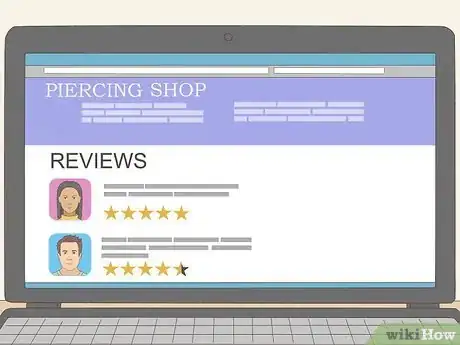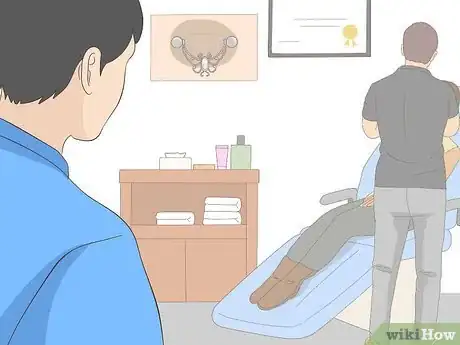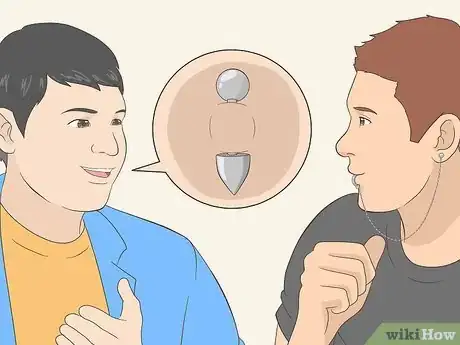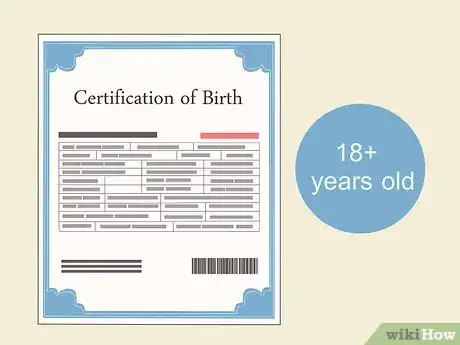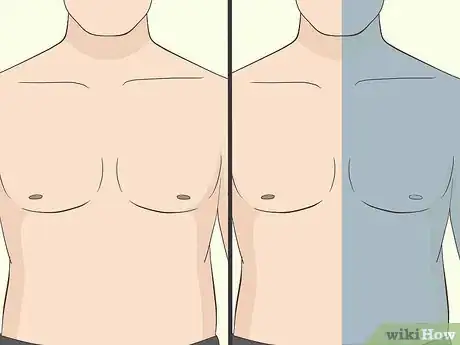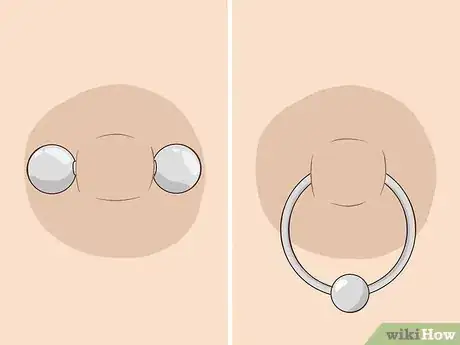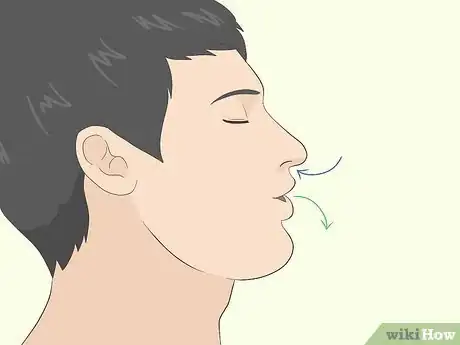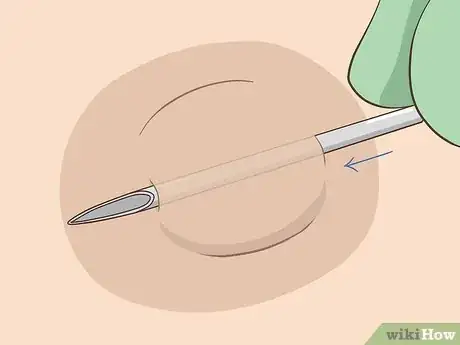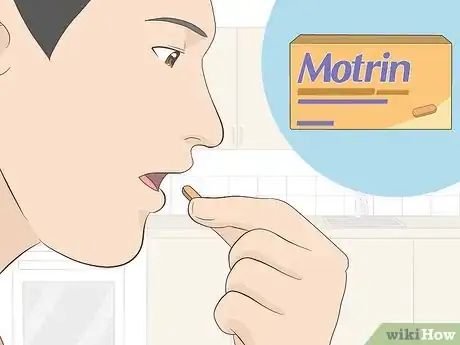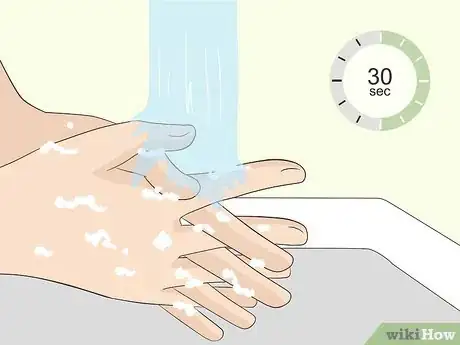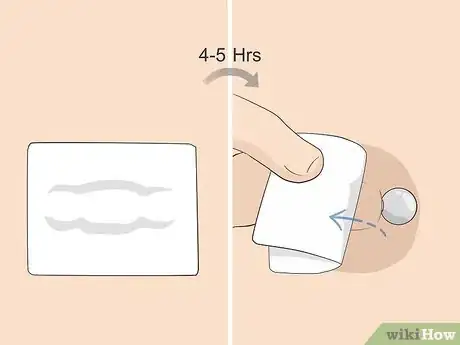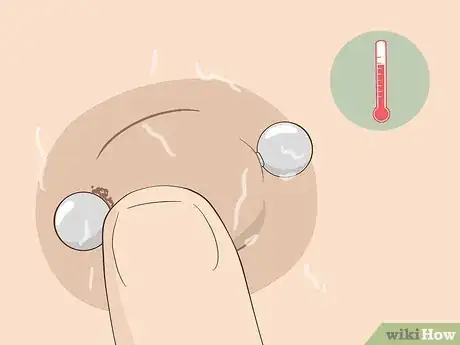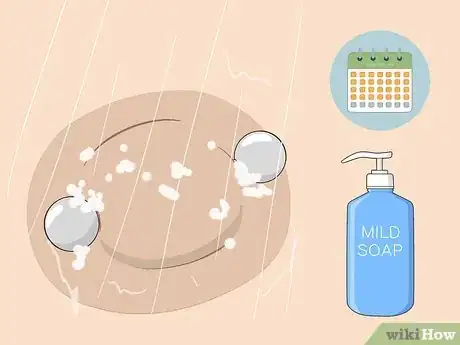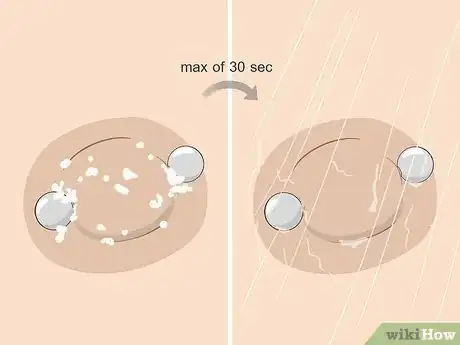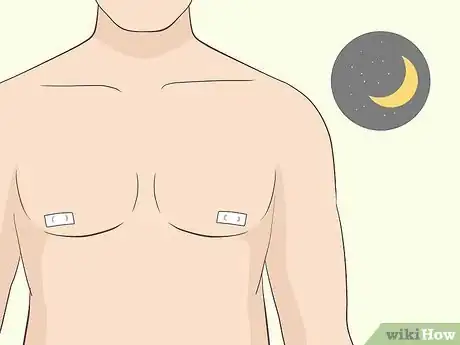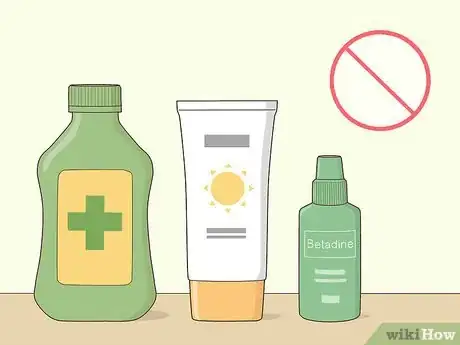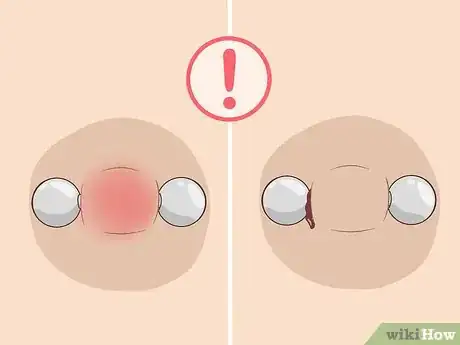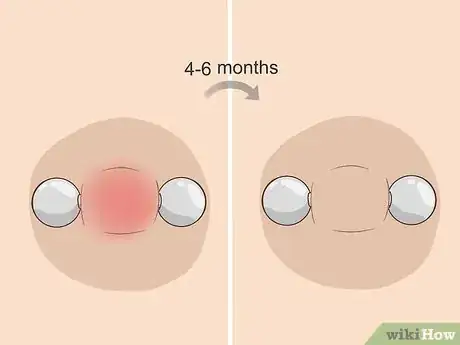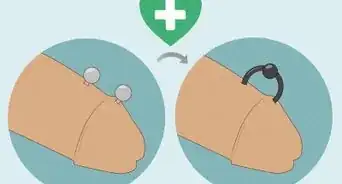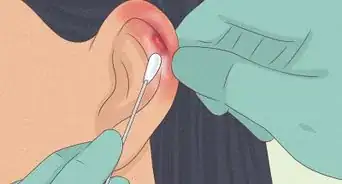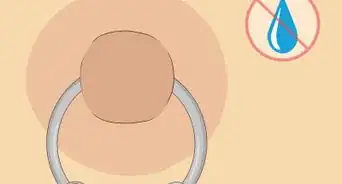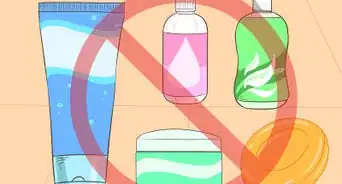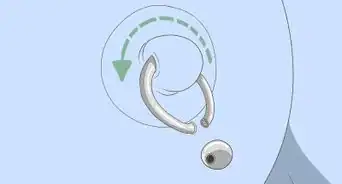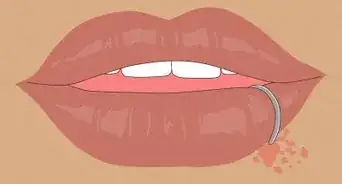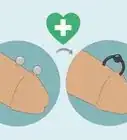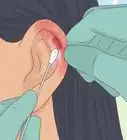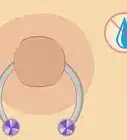This article was co-authored by Roger Rodriguez and by wikiHow staff writer, Danielle Blinka, MA, MPA. Roger Rodriguez, also known as Roger Rabb!t, is the Owner of Ancient Adornments Body Piercing, a piercing studio based in the Los Angeles, California area. With over 25 years of piercing experience, Roger has become the co-owner of several piercing studios such as ENVY Body Piercing and Rebel Rebel Ear Piercing and teaches the craft of body piercing at Ancient Adornments. He is a member of the Association of Professional Piercers (APP).
There are 7 references cited in this article, which can be found at the bottom of the page.
wikiHow marks an article as reader-approved once it receives enough positive feedback. This article received 21 testimonials and 94% of readers who voted found it helpful, earning it our reader-approved status.
This article has been viewed 2,115,771 times.
Nipple piercings are a great way to express your personality, and they may even make sex more fun. A piercing can make your nipples more sensitive and can also enlarge them. Before you get your nipples pierced, find a reputable parlor. Then, attend a consultation with your piercer and get the piercing done. After you get your nipples pierced, clean them and take good care of your piercing.
Things You Should Know
- Choose a reputable piercing parlor with good customer reviews, and visit before making an appointment to verify its reputation.
- Get a consultation with your piercer; decide whether you want both nipples pierced and what kind of piercing you want.
- Take deep breaths to manage the brief pain from the piercing. To clean the piercing after, wash your hands before rinsing it with mild soap and warm water.
- Protect the piercing at night with gauze or a sports bra. Use a salt solution to promote healing (not antiseptics), and don’t play with the piercing while it heals.
Steps
Choosing a Piercing Parlor
-
1Research local piercing parlors to learn about your options. Do an online search to find parlors in your area. Visit the parlor’s website to learn about their credentials, experience, and the piercers who work there. Check out their prior work and pictures of the parlor to see if it looks like a professional establishment.[1]
- If there are multiple parlors in your area, research several options to find the right one for you.
- Type the parlor’s name into your search engine to see if any news articles come up. This will help you find out about problems they may have had in the past.
-
2Read reviews from prior customers to make sure they’re satisfied. Check out the reviews on the parlor’s website and social media accounts. Then, check sites like Yelp for additional reviews. Read multiple reviews to see if clients appear to be satisfied with the parlor.[2]
- If you see bad reviews, look at what the clients didn’t like to see if it might be a red flag. Multiple bad reviews may be a sign that you need to look into other options.
Tip: If you have friends who have nipple piercings, ask them about where they went and what the process was like.
-
3Visit the parlor you plan to use before you make an appointment. Look around the parlor to make sure it looks like a professional parlor. Talk to the people who work there to see if they sound knowledgeable. Additionally, ask if you can watch them perform a piercing to make sure they wash their hands and use sterile instruments. Here are some things to look for:[3]
- Make sure the parlor looks clean and well-lit.
- Check for an operating license from the local Health Department.
- Make sure the piercers are licensed if that’s required in your area.
- See if the piercers are trained or certified by the Association of Professional Piercers (APP).
- Check that they are using a sterile piercing needle and not a piercing gun. Piercing guns can’t be sterilized, so they can lead to an infection.
- Make sure the tools are in single-use or sterile packaging.
Attending a Consultation
-
1Get a consultation with your piercer to confirm what you want. At your consultation, you and your piercer will discuss your nipple piercing. Talk to your piercer about what type of piercing you want. Then, ask them any questions that you may have. At the end of the consultation, pick out your jewelry with your piercer’s advice.[4]
- If you prefer your piercer to be a particular gender, tell the parlor receptionist about your preference or talk to a piercer directly to arrange an appointment.
- Some piercers schedule the consultation on a different day from the piercing, but you might have your piercing done right after the consultation. Ask about this when you make your appointment.
-
2Show the piercer a copy of your birth certificate to prove your age. You will likely need to be a certain age to get a nipple piercing. This is usually 18-years-old. To prove you're old enough, bring your birth certificate with you so that the parlor can verify your age.[5]
- Your parlor might accept your ID as proof. Ask them beforehand if you need to bring your birth certificate or if your ID will be sufficient.
Tip: If you’re underage, you’ll likely need your parent or guardian’s permission to get your nipples pierced. Typically, they’ll need to visit the parlor with you to sign the necessary paperwork.
-
3Decide if you want to get both nipples pierced at the same time. If you want both nipples pierced, you can choose to do them at the same time. However, it’s also okay to get 1 nipple pierced. While getting them pierced at the same time means more pain, it’s usually easier to do the aftercare for both nipples at the same time. Tell your piercer if you want both of your nipples pierced at once or if you want to do just 1.[6]
- It’s usually cheaper to pierce both nipples at the same time than to do them separately. Talk to your piercer to find out if they’ll charge you a lower fee to do both piercings in the same appointment.
Tip: You might be able to get your nipple pierced multiple times, but it’s important to let your nipple heal completely from 1 piercing before you get it pierced again. It may fully heal in as little as a 3-6 months, but it could also take a full year to heal.
-
4Pick a nipple barbell or ring for the piercer to insert. Nipple rings are usually a barbell rod or a ring. Rings are more popular, but barbells are easier to hide and are less likely to pull out. Talk to your piercer about your options, then pick the style you prefer.[7]
- You’ll likely need a gold or titanium nipple ring because they’re less likely to cause a reaction. It's important that your first nipple ring doesn't contain a metal that might irritate your skin, as the piercing won't heal.
- Don’t use nipple rings that contain high amounts of nickel because they might cause an allergic reaction or an infection.[8]
-
5Tell the piercer if you want a horizontal or vertical piercing. Horizontal piercings are the most popular, and they go sideways in your nipple. However, you might prefer a vertical piercing that goes up and down. Decide which way you want your piercing done during your consultation, then tell your piercer.[9]
- If you’re not sure which you prefer, ask your piercer for advice or look at pictures of other nipple piercings.
Getting Your Piercing
-
1Prepare yourself for a quick sensation of pain. Nipple piercings are typically more painful than other body piercings, but the pain should be quick and manageable. You’ll likely feel like your nipple is being pinched or bitten very hard. Additionally, your nipple may feel hot. Take several deep breaths and relax your body to help you manage the pain.[10]
- The amount of pain you feel will depend on your threshold for pain. It might feel very painful if you don’t tolerate pain well, but you might think it’s just a minor discomfort if you have a high pain tolerance.
-
2Let the piercer insert a hollow needle into your nipple. Sit still as the piercer pushes a hollow needle into your nipple. They’ll do it quickly, so you’ll likely feel a sharp, quick sensation of pain. Don’t flinch because it might make your nipple pull against the needle.[11]
- The pain will likely be over very quickly, so try not to worry.
-
3Take a deep breath as the piercer inserts the nipple ring. After the needle is in your nipple, the piercer will push the nipple ring through the hollow and into your nipple. Then, they’ll remove the hollow needle from your nipple. You might experience discomfort as they pull out the needle.[12]
- When the needle is removed, the nipple ring will remain in place. You shouldn’t feel it in your nipple, but your nipple will likely feel tender and hot.
-
4Take an over-the-counter pain reliever if you’re in pain. It’s normal to feel pain during the piercing, but it should subside quickly. If you’re still feeling discomfort, take an over-the-counter pain reliever like nonsteroidal anti-inflammatory drugs (NSAIDs), such as ibuprofen (Motrin, Advil) and naproxen (Aleve), or acetaminophen (Tylenol). Use the pain reliever as directed on the label.[13]
- Keep in mind that over-the-counter NSAIDs can make you bleed a little more.
- Check with your doctor before taking over-the-counter pain relievers.
Cleaning Your Nipple Piercing
-
1Wash your hands with soap and warm water. Your hands can harbor germs and bacteria that might cause an infection. Wet your hands under warm water, then apply a mild, fragrance free soap to your palm. Lather the soap for 30 seconds, then rinse your hands clean. Dry your hands off with a clean towel.[14]
- Make sure the towel you use is clean and dry. A dirty towel may transfer germs back onto your hands.
-
2Remove the bandage 4-5 hours after you get the piercing. Gently pull the bandage off of your nipple. Be careful that you don’t accidentally tug on your skin or the piercing. You may experience some discomfort as you remove the bandage.[15]
- If your piercer gives you other instructions, follow their advice.
-
3Use warm water to remove any crusty material from around the piercing. Run a stream of warm water over your nipple to soften the crusty material. Then, use your fingers to flake it off of both your nipple and your nipple ring. Be gentle and avoid pulling at your skin.[16]
- If you prefer, soften the crusty material by soaking your nipple in a cup of warm water. Then, gently remove the crust with clean hands.
-
4Apply a drop of mild, fragrance-free soap to the piercing. Put a drop of soap on your fingertips, then lightly dab it onto your nipple. Gently lather the soap around your nipple and the piercing for about 5-10 seconds, being careful not to rub the skin.[17]
- You don’t need to let the soap sit on your nipple. If you do this, it’ll dry out your skin and make it take longer for the piercing to heal.
-
5Rinse off the soap immediately to avoid irritation. Run a stream of warm water over your nipple to rinse away the soap. Keep rinsing until all of the soap is gone.[18]
- Don’t leave the soap on the piercing for longer than 30 seconds.
-
6Clean the piercing once a day for the first four weeks. After the initial cleaning, you will need to wash the piercing once a day using a mild antibacterial cleanser. Apply a mild, fragrance-free soap to the nipple piercing while you’re in the shower. Then, rinse the nipple piercing clean.[19]
- Use a clean towel after each shower because dirty towels can harbor bacteria. It’s important to keep bacteria away from your piercing as it heals.
-
7Soak the piercing in a salt solution 1-2 times daily to promote healing. To make a salt solution, dissolve 1/8 to 1/4 tsp (0.75 to 1.42 g) of non-iodized sea salt in 1 cup (50 ml) of warm distilled water. Pour the solution into a cup, then submerge your nipple into it. Soak for 10-15 minutes, then rinse your nipple clean with fresh water. Pat it dry with a clean paper towel.[20]
- If you like, you can repeat the soak twice a day until your piercing heals.
- Do not use table salt, which has iodine. Iodine can irritate the wound, slowing the healing process.
- Instead of making your salt solution, you can buy a saline solution at a drugstore that will serve the same purpose.
Caring for Your Piercing
-
1Protect the piercing at night so it doesn’t get pulled out. Cover your nipple piercing at night to protect it. Use surgical tape to secure a piece of sterile gauze over the piercing or wear a soft sports bra over it. Additionally, wear a t-shirt or pajama top to reduce the risk of your piercing getting caught in your sheets.[21]
- You can buy surgical tape and sterile gauze at your local drugstore.
- Don’t leave your piercing covered during the day because exposing it to air helps it heal.
-
2Avoid using antiseptics because they slow down healing. Don’t use any over-the-counter products for wound care on your piercing. These products can slow down the healing process or irritate your skin. Here are some products you need to avoid:[22]
- Rubbing alcohol or methylated spirits: these are very astringent and are too harsh to be used on sensitive nipple piercings.
- Hydrogen peroxide or iodine products: these prevent scar tissue from forming and prolong the healing process.
- Anti-bacterial creams and gels: creams such as Neosporin or Bacitracin should not be used on nipple piercings as they cause the piercing to become moist and prevent the piercing from healing quickly.
- You should also avoid putting products like sun tan lotion, baby oil or tea tree oil on the nipple, as they can cause the skin to become irritated.
-
3Do not touch or play with the piercing. It is important that you avoid touching or playing with the piercing as much as possible during the healing process. Bacteria from your hands can easily enter the wound and cause the piercing to become infected, which is the last thing you want. This includes not allowing your partner to touch or lick your pierced nipple. If you absolutely have to touch the piercing, remember to wash your hands thoroughly with antibacterial soap first or wear gloves.[23]
- You should avoid twisting or turning the ring in the piercing for the first couple of months, except when cleaning. Twisting the ring aggravates the piercing and slows down healing.
- You should also be careful when playing sports or during any physical activity, as the ring may be torn from the piercing if knocked against too roughly.
- You can cover the piercing with a bandage or some surgical tape to protect it during physical activity, but you must remove the tape immediately afterward and wash the piercing thoroughly.
- Do not remove the ring or barbell from the piercing until it has fully healed.
-
4Watch for signs of an infection. You likely won’t get an infection if you take good care of your piercing. However, it’s possible for your piercing to develop an infection, which may require treatment. Look for infection symptoms like nipple soreness, redness, swelling, and potentially blood or pus. If you notice these symptoms, visit your doctor for treatment.[24]
- Your doctor may prescribe an antibiotic to treat your infection.
- Don’t try to remove your nipple ring because your piercing may close up. This can make the infection worse, as the piercing won’t be able to drain.
- If your doctor recommends removing the piercing, visit your piercer to have it done. Don’t do it yourself.
Warning: If you develop a fever and chills with your infection, see your doctor immediately. You probably don’t need to worry, but it’s possible you have a condition called toxic shock syndrome (TSS), which requires prompt treatment.
-
5Allow 3-6 months for the piercing to heal. With proper care, nipple piercings usually heal in about 3-6 months. Your nipple will likely feel tender for the first few days, but it’ll get more comfortable as time progresses. Continue to care for your piercing until it’s fully healed.[25]
- Keep in mind that some people may take up to a year to fully heal. Additionally, it’s possible that your nipple will reject the piercing. If your nipple keeps getting infected or has a red streak, it’s likely rejecting the piercing.
Community Q&A
-
QuestionIsn't it pointless for a teenage girl to get nipple piercings since no one will see them?
 Community AnswerShe'll see them. Not everything a girl/woman does is for the attention of someone else.
Community AnswerShe'll see them. Not everything a girl/woman does is for the attention of someone else. -
QuestionI got my nipples pierced yesterday and even though I thought I would like it, I hate them and want to take them out. How long should I wait?
 Community AnswerGo see the piercer and discuss it with him. You may have to wait a few weeks or a few months. You might also try a different type of nipple piercing, such as a barbell instead of ring or vice-versa.
Community AnswerGo see the piercer and discuss it with him. You may have to wait a few weeks or a few months. You might also try a different type of nipple piercing, such as a barbell instead of ring or vice-versa. -
QuestionMy breast are extremely large and my nipples are really sensitive. I still want a nipple piercing, will it affect my breast size and sensitivity?
 Community AnswerIt will not affect your breast size but they could make your nipples more sensitive, a lot of people get piercings to increase nipple sensation.
Community AnswerIt will not affect your breast size but they could make your nipples more sensitive, a lot of people get piercings to increase nipple sensation.
Warnings
- Never try to pierce your nipples at home. This is very dangerous and can lead to an infection. Always visit a reputable piercing parlor to get your nipple pierced.⧼thumbs_response⧽
- Go to the doctor immediately if your piercing becomes infected.⧼thumbs_response⧽
- Nipple piercings take a long time to heal. It’ll likely heal within 3-6 months, but it may take a whole year to heal.[27]⧼thumbs_response⧽
References
- ↑ https://www.betterhealth.vic.gov.au/health/conditionsandtreatments/piercings
- ↑ https://www.health.com/skin-conditions/nipple-piercing
- ↑ https://youngwomenshealth.org/2013/08/07/body-piercing/
- ↑ https://youngwomenshealth.org/2013/08/07/body-piercing/
- ↑ https://youngwomenshealth.org/2013/08/07/body-piercing/
- ↑ https://youngwomenshealth.org/2013/08/07/body-piercing/
- ↑ https://youngwomenshealth.org/2013/08/07/body-piercing/
- ↑ https://www.aafp.org/afp/2005/1115/p2029.html
- ↑ https://www.health.com/skin-conditions/nipple-piercing
- ↑ https://www.health.com/skin-conditions/nipple-piercing
- ↑ https://youngwomenshealth.org/2013/08/07/body-piercing/
- ↑ https://youngwomenshealth.org/2013/08/07/body-piercing/
- ↑ https://youngwomenshealth.org/2013/08/07/body-piercing/
- ↑ https://youngwomenshealth.org/2013/08/07/body-piercing/
- ↑ https://www.safepiercing.org/aftercare
- ↑ https://youngwomenshealth.org/2013/08/07/body-piercing/
- ↑ https://youngwomenshealth.org/2013/08/07/body-piercing/
- ↑ https://youngwomenshealth.org/2013/08/07/body-piercing/
- ↑ https://uhs.berkeley.edu/health-topics/body-piercings
- ↑ https://www.safepiercing.org/aftercare
- ↑ https://www.safepiercing.org/aftercare
- ↑ https://www.safepiercing.org/aftercare
- ↑ https://www.safepiercing.org/aftercare
- ↑ https://www.aafp.org/afp/2005/1115/p2029.html
- ↑ https://youngwomenshealth.org/2013/08/07/body-piercing/
- ↑ https://www.cosmopolitan.com/uk/love-sex/sex/a9609890/nipple-piercing-pain-facts/
- ↑ https://youngwomenshealth.org/2013/08/07/body-piercing/
About This Article
To get your nipple pierced, first research several parlors online by reading customer reviews and checking their websites to find one that’s professional. You should also try to visit the parlor before booking an appointment to make sure it’s clean and safe. After you’ve made an appointment, decide whether you want a ring or barbell piercing. Additionally, prepare yourself to experience some pain during the piercing, which feels like being pinched or bitten. Once the piercing is done, wash your nipple by soaking it in water to remove any dried blood. During the first 4 weeks of healing, wash your piercing once a day using an antibacterial cleanser to avoid infection. If you want to encourage your piercing to heal, soak it in a solution of 1/4 teaspoon of sea salt and 1 cup of water for a few minutes once a day. For tips on how to protect your piercing at night, read on!

